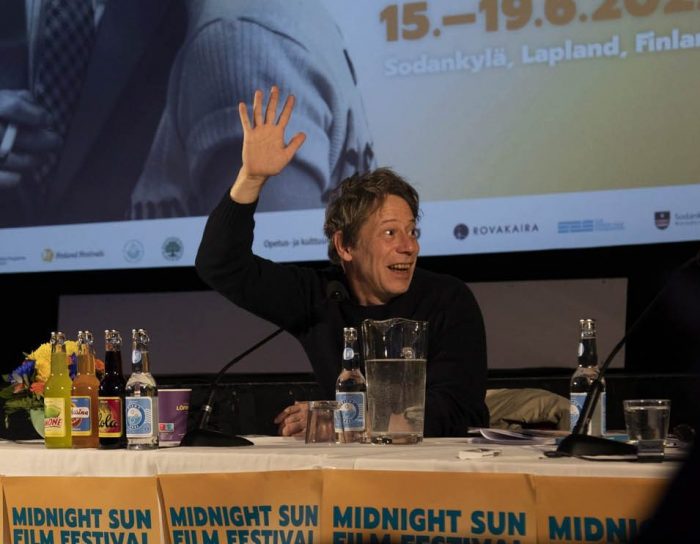On Saturday morning Kitisenranta School was filled with people eager to hear about the diverse career of actor and director Mathieu Amalric.
Diversity and changing landscapes were present already in Amalric’s youth. His parents were foreign correspondents and took Mathieu with them to Washington D.C. when he was six. After the time spent in the U.S. the scenery changed completely as the family moved straight to Moscow. The family’s interest in culture shed its light on their life in Moscow and Mathieu’s mother’s adventurous nature led them to visit Finland by car for the first time. Education was seen as important especially by Mathieu’s mother, who enrolled the boy for example to a Russian piano school.
The family returned to Paris when Mathieu was 12 and his experiences abroad became valuable currency. Mathieu describes family life as difficult, but he appreciates his hardships too: “With a happy childhood you lose something.” He spent a lot of time in school and hobbies to avoid staying home. One of the hobbies was a film club that showed classics like Hiroshima, mon amour (1959) and Punishment Park(1971).
Amalric got a jump start to a career in filmmaking when he ended up acting in Otar Iosseliani’s film Les Favoris de la Lune (1984). Iosseliani was used to having ordinary people acting in his films. It was a life changing event for Amalric: he felt like he belonged on the set. He wanted to work with his hands and found that in filmmaking he could do just that. Acting wasn’t his aspiration though, he wanted to direct and make films.
Louis Malle’s suicide-themed film The Fire Within (1963) was a significant experience to Amalric. He managed to get a trainee position in Malle’s Goodbye, Children (1987). It was a harsh school for Amalric: “Cinema is military. It’s like left wing politics done with right wing methods.” Amalric made an impression nevertheless, for Malle wanted to employ him in the editing phase too. During the filming he learned many new phases of filmmaking and to appreciate different crafts that it requires.
Amalric never got into a film school. Instead he started to make films. He made his first short film with a small budget in his mother’s home. Later he also filmed with his grandmother. His film was seen by Arnaud Desplechin, who invited Amalric to a tryout. “Desplechin invented me as an actor”, he said. At 30 he became an actor in La sentinelle (1992).
Being a laughing stock is not a problem to Amalric. He considers the ability to be one a central quality of anyone that wants to make films. “In cinema you have to have some sort of physical courage. You have to deal with shyness, to do things that are disgusting, dangerous, hurting…” In his successful acting career Amalric has done a great variety of roles, from the antagonist to James Bond to many roles in his own films. Despite of this he sees himself mostly as a director and a filmmaker.
In the end of the discussion the classic question is presented, but Amalric struggles to answer it. He doesn’t like islands and cannot name just one film, as it changes from day to day. Instead he would love to shoot a mix-up of his experiences at Sodankylä and develop a projector on the deserted island for watching it.
Photo: Jennifer Ahlamaa
